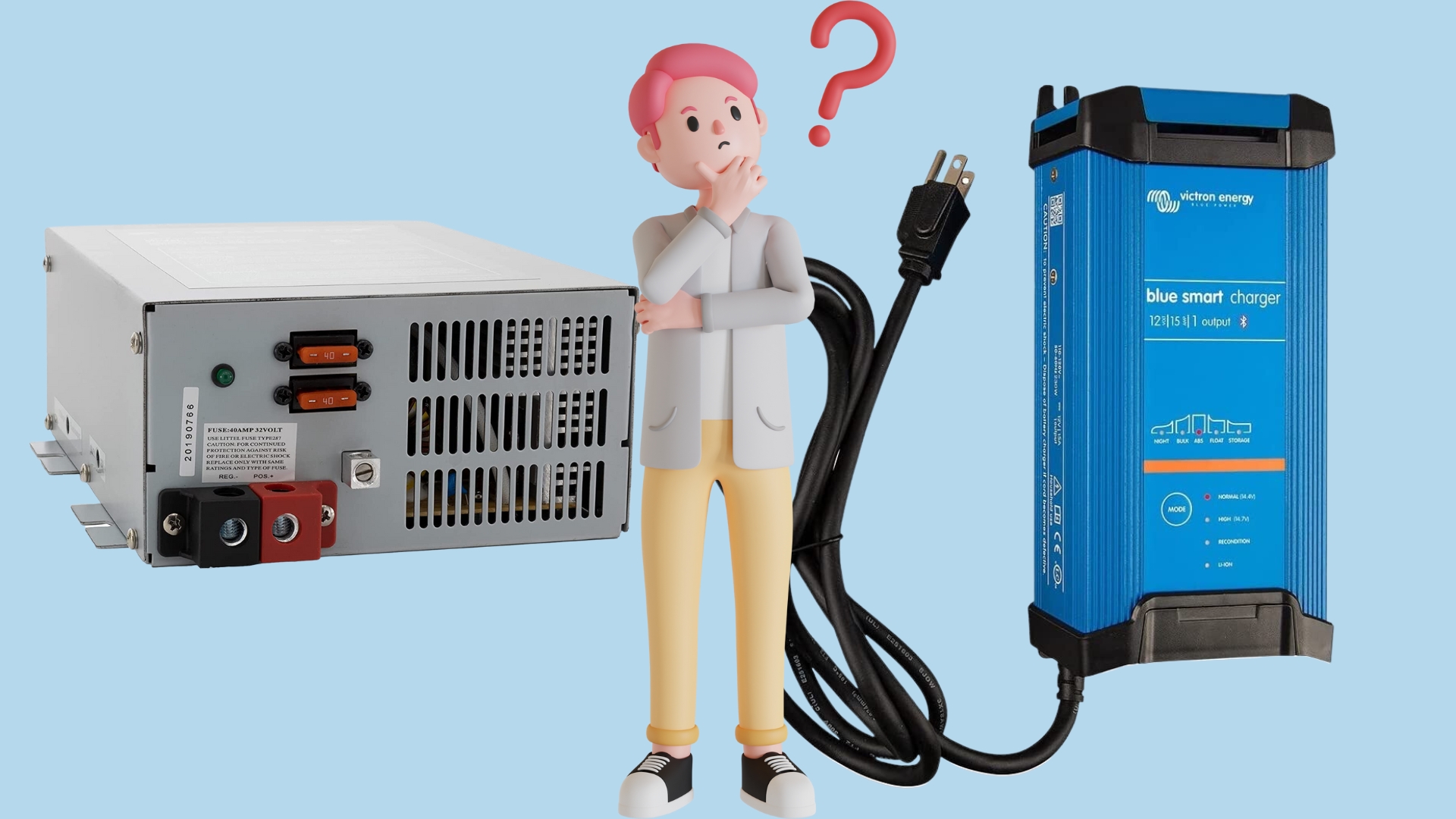Kevin D Pem
RVF 5K Club
- Joined
- Jul 29, 2020
- Messages
- 5,280
- Location
- AZ
- RV Year
- 1984
- RV Make
- Alpinelite
- RV Length
- 26'
- TOW/TOAD
- 2016 Ram 1500
- Fulltimer
- Yes
Follow along with the video below to see how to install our site as a web app on your home screen.
Note: This feature may not be available in some browsers.
You are calling your convertor a charger, that is all. Terminology.Right but there is no need for a converter (120v AC to 12v DC) when you have a big enough 12v battery bank to handle the 12v loads. Conversely the use of a bigger inverter (12v DC to 120V AC) is made possible by the same higher capacity battery bank.
My Bay Star had a converter which provided 12v DC because it only had two 12v house batteries (typical for a gas class A), and even after I installed a large Li-ion battery bank I retained the converter to provide 12v DC because my battery bank was 24v (charging up to 32.8v with solar) and while it wasn’t highly efficient, the converter got its 120v from the inverter. So by using a 12v converter powered by a 3kw Victron inverter off a 24v battery bank, I was still able to make 12v DC for the slides and jacks.
With the battery banks on DPs there is no need for a converter because you have a big enough 12v battery bank to handle the loads and it is charged by the inverter/charger when on shore or gen power - the reason many say to run your slides in and out either on shore or gen power, although with a healthy, well charged battery bank this isn’t necessary. Converters are needed on trailers, campers, and most gas coaches because they lack a sufficient battery bank and a big enough inverter/charger.
I do not believe inverter, converter, and charger are the same. Some may combine functionality, for example my Victron inverter is also a charger. I can isolate it so that it's only an inverter and not a charger.You are calling your convertor a charger, that is all. Terminology.
Sorry @Neal an inverter is an inverter, however an inverter/charger has the function of a converter, because a converter is nothing more than a charger designed to supply a continuous current! Or put another way a converter is a robust 12vdc charger.I do not believe inverter, converter, and charger are the same. Some may combine functionality, for example my Victron inverter is also a charger. I can isolate it so that it's only an inverter and not a charger.
Actually that is not the case at all. As with many (perhaps most) , I have an inverter with a built in battery charger, not a converter, hence the term inverter/charger. I suppose you could call it a converter because its making 12v DC out of 120v AC, but it is not at all similar to common RV converters. Converters provide a source of 12v DC from 120v AC to those functions requiring 12v DC. The “charger” portion of the inverter/ charger is a battery charger that charges the battery bank, while the battery bank is the source of the 12v DC for the functions needing that energy source. Its more than semantics - it is quite simply a different type of equipment.You are calling your convertor a charger, that is all. Terminology.

I got an answer to the lead question to this one. I am going to be replacing the batteries on my coach. 2019 Duch Star 4018. I currently have 8 6v HB 210 Ah batteries in place. I have a MS2812 Magnum Inverter/charge. If I understand the math that is 420 Ah available (840x 50%). I am seriously considering one 280 Ah 12v SOK battery. Now before anyone pulls the arrows out, I think we are a little wierd. We have power in our storage facility and rarely boondock. When we do (at a motorcross track or rodeo facilities), there will be scores of trailers running generators through the night. We don't have any plans in the near or mid term to do any "real" boondocking like many on here seem to. If our mission changes or I determine that the one is completely inadequate, I can easily add one or possibly two of these same batteries. My 4018 is pretty heavy on the front end so If I can get away with the one, I can knock just short of 600# off my front end. Has anyone else tried this? If yes, how did it go?